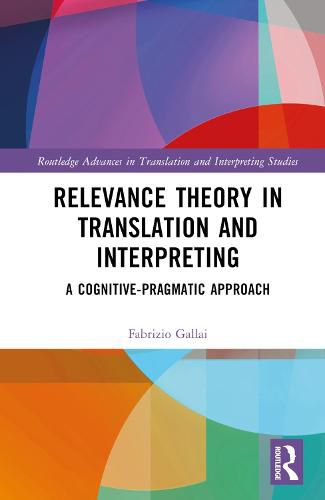Readings Newsletter
Become a Readings Member to make your shopping experience even easier.
Sign in or sign up for free!
You’re not far away from qualifying for FREE standard shipping within Australia
You’ve qualified for FREE standard shipping within Australia
The cart is loading…






This book illustrates the potential of Relevance Theory (RT) in offering a cognitive-pragmatic, cause-effect account of translation and interpreting (T&I), one which more closely engages T&I activity with the mental processes of speakers, listeners, writers, and readers during communicative acts.
The volume provides an overview of the cognitive approach to communication taken by RT, with a particular focus on the distinction between explicit and implicit content and the relationship between thoughts and utterances. The book begins by outlining key concepts and theory in RT pragmatics and charting the development of their disciplinary relationship with work from T&I studies. Chapters draw on practical examples from a wide range of T&I contexts, including news media, scientific materials, literary translation, audiovisual translation, conference interpreting, and legal interpreting. The book also explores the myriad applications of RT pragmatics-inspired work and future implications for translation and interpreting research.
This volume will be of interest to scholars in T&I studies and pragmatics.
$9.00 standard shipping within Australia
FREE standard shipping within Australia for orders over $100.00
Express & International shipping calculated at checkout
This book illustrates the potential of Relevance Theory (RT) in offering a cognitive-pragmatic, cause-effect account of translation and interpreting (T&I), one which more closely engages T&I activity with the mental processes of speakers, listeners, writers, and readers during communicative acts.
The volume provides an overview of the cognitive approach to communication taken by RT, with a particular focus on the distinction between explicit and implicit content and the relationship between thoughts and utterances. The book begins by outlining key concepts and theory in RT pragmatics and charting the development of their disciplinary relationship with work from T&I studies. Chapters draw on practical examples from a wide range of T&I contexts, including news media, scientific materials, literary translation, audiovisual translation, conference interpreting, and legal interpreting. The book also explores the myriad applications of RT pragmatics-inspired work and future implications for translation and interpreting research.
This volume will be of interest to scholars in T&I studies and pragmatics.